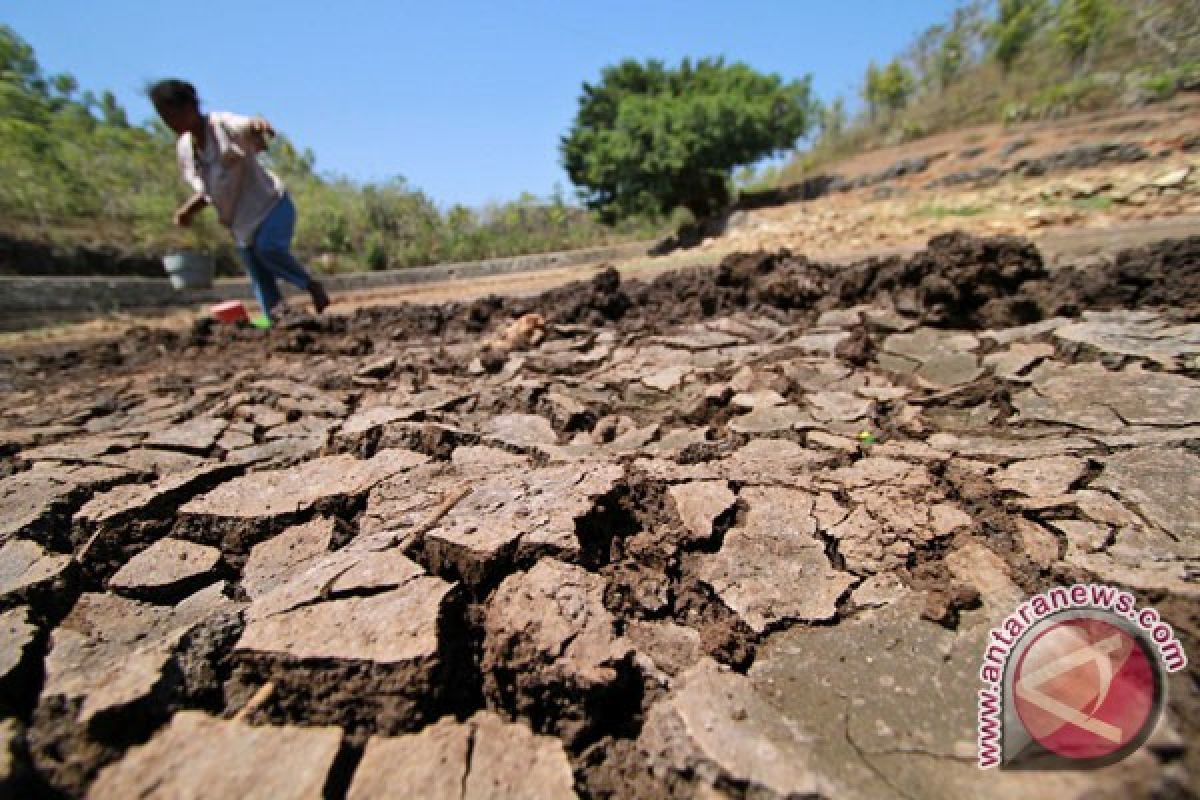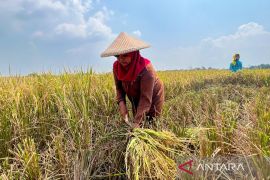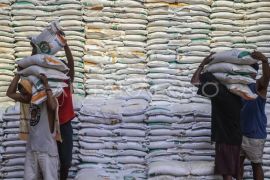In South Sumatra, a spokesman for the local Bulog, Bambang Napitupulu, said the agency was ready to conduct market operations to anticipate a likely decline in rice production as a result of the dry season.
"Bulog has built up a sufficient rice stock for market operations when the prices of the commodity go up in this dry season," Napitupulu said in Palembang here on Monday.
Napitupulu said the long dry spell this year would probably cause a decline in rice production and therefore it should be anticipated.
"So if there are rice price increases, Bulog will conduct market operations because our rice stock is more than sufficient," Napitupulu said, adding that he would continue to monitor the movements of rice prices in the local markets.
Meanwhile, Bulog had conducted market operations in a number of regions in North Sumatra to control fluctuating rice prices.
"The market operation is still going on in Gunung Sitoli and Medan," local Bulog official Rusli said in Medan on Friday.
Rusli said the market operation in North Sumatra was not a problem because a total of 101,000 tons of rice stock in the province were sufficient to meet to the local demand for eight months.
Following a fluctuating rice prices in Rangasbitung, Lebak District in Banten Province in the past week, the local people also called on Bulog to stage market operation immediately.
Maesaroh, a resident of Rangkasbitung said in Lebak that rice prices in the past week had gone up by Rp1,000 per kilogram.
"Today I only afford 1,5 kilogram of rice at the price of Rp11,000 per kilo gram but a few days ago it was Rp9,000 per kilogram. It means there has been a rise by Rp1,000 per kilogram, and therefore we hop Bulog should conduct rice market operation here immediately," Maesaroh said.
Even a number of rice wholesalers at Cipinang wholesale market in Jakarta have expressed hope that Bulog could immediately conduct rice market operation to control the fluctuating prices.
"We hope that Bulok will immediately supply sufficient quantity of rice because the prices are currently exorbitantly high," said Anton, one of the rice wholesalers at Cipinang market on Tuesday.
Anton said very expensive rice prices has troubled the traders to sell their rice.
Meanwhile, Harsono Rusli, another trader at Cipinang market, said since the rice price hikes rice sale at his shop dropped averagely by eight tons per day.
"When rice prices went up a few days before Idul Fitri, Bulog supplied hundreds of tons of rice per day but now the supply drops to once in three or four days," Harsono said.
He said Bulog was expected to conduct market operation immediately to lower the rice prices which rose by Rp400 per kilogram this week.
According to Harsono, the price of IR-1 rice last Wednesday was Rp7,300 per kilogram but now it rose to Rp7,700 per kilogram, while IR-2 and IR-3 rice also rose by Rp400 per kilogram respectively to be Rp7,300 per kilogram and Rp7,100 per kilogram.
Harsono said crop failure in Central Java and East Java has contributed to the rice price hikes at Cipinang wholesale market because the harvest in Karawang as the rice supplier to the markets in Jakarta has to be diverted to Central and East Java.
Meanwhile, Agriculture Minister Suswono said here on Monday that long spell of drought has affected 95,891 hectares of rice fields in various regions in Indonesia from January to August this year with 3,713 hectares failing to produce a harvest.
The agriculture minister added that besides drought, floods and insects had been the causes of harvest failure so far.
He said during the past eight months in 2011, the number of rice fields affected by floods was recorded at 115,851 hectares and 16,471 hectares of them had failed to produce a harvest.
The number of rice fields affected by plant organisms in the period reached 577,015 hectares and 35,454 hectares of them had failed to produce harvest because of that.
In all total rice fields that failed to produce harvest from January to August 2011 reached 55,638 hectares.
"It is still below the average areas in the past five years recorded at around 100,000 hectares a year," the minister said.
He said the government had provided Rp374 billion to help farmers who had failed to harvest.
Bulog President Director Sutarto Alimoeso here early this month that the government was planning to increase the rice reserves from 500,000 tons this year to over 1 million tons in stages.
"We will increase our rice reserves to 1 million tons in stages," Sutarto said after a coordination meeting on food security at the Coordinating Ministry for Economic Affairs.
He said the agency this year received a fund injection of Rp1 trillion to increase the rice reserves which currently stood at an estimated 500 thousand tons.
The fund would be enough to procure around 100 thousand tons of rice, he said.
He expressed hope the fund needed to increase the rice reserves would increase all the time in line with increasing rice consumption.
According to the director general of domestic trade at the Trade Ministry, Gunaryo, the government relies on the implementation of market operation and distribution of subsidized rice to the poor community to stabilize the fluctuating rice prices.
"If the rice prices continue to rise and the increase is latent, the market operation and distribution will certainly be improved and intensified, especially in non rice producing regions," Gunaryo said on Wednesday.
He explained that the government from January to September this year distributed 182,000 tons of rice for market operation activities with medium and premium quality was sold at a price slightly cheaper than that in the markets. (Uu.O001/HAJM/A014)
Reporter: by Otniel Tamindael
Editor: Priyambodo RH
Copyright © ANTARA 2011












